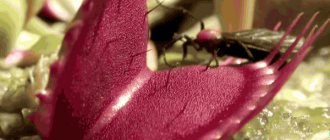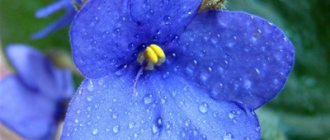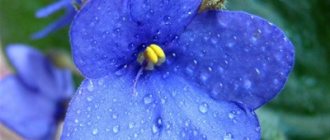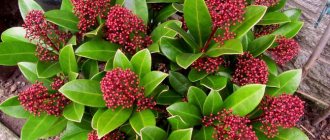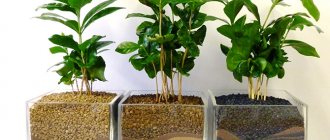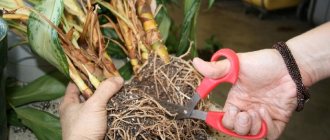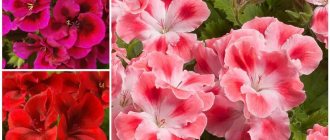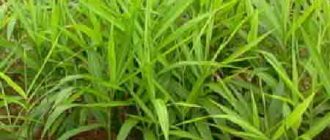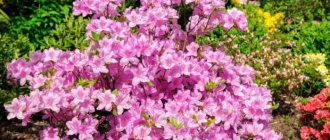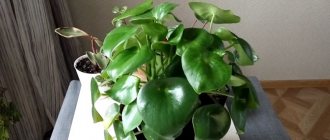If you decide to have a Venus flytrap at home, you will be pleasantly surprised by observing the life activity of the predator plant. If there are spiders and flies in the house, Dionaea will rid you of their presence. If not, you will have to catch the insects yourself and “feed” the exotic flower from time to time.
In any case, you will watch with interest the behavior of your non-standard green friend. Moreover, the older he is, the more saturated his color will be, changing from pink to dark red.
Home care
If you decide to keep a Venus flytrap at home, keep in mind that this predator is not so easy to keep. But if you provide the necessary illumination, humidity and temperature for the overseas guest, then the eccentric plant will take root and will also catch all the flies in the area.
Location and lighting
The American ward requires a lot of light. Dionaea should be exposed to direct sunlight for at least 4-5 hours a day. Therefore, an eastern window sill is ideal. But if you have to place a flowerpot on a south window, in the summer afternoon it is better to shade the exotic beauty by stretching, for example, a piece of gauze folded in several layers. The flytrap placed on the northern windowsill will have to be additionally illuminated.
In winter you will need a lamp anyway. Move a 40 W fluorescent lamp away from the bush at a distance of 15-20 cm. It is advisable that the light source and the pot with the plant do not change their location. Also be careful not to touch the sprouts with your hands. Even a light touch to the trap can be enough to make it wither.
Temperature
The temperature favorable for the Venus flytrap is within +25°C. But if it’s a little more or less, it’s not scary. The southern guest can withstand even 35-degree heat. In winter, the plant requires a slight decrease in degrees. At the same time, try to protect your exotica from drafts.
With the onset of autumn, the flower should begin to be prepared for the dormant period. Gradually reduce the air temperature to +10-15 degrees and bring the result to +5°C. At the same time, reduce daylight hours to 8-9 hours. If there is an insulated loggia, move the pot or aquarium with your pet there.
If there is no such place, you can put it in the refrigerator. Before this, spray and pack together with the flowerpot in a bag. Don't forget to poke holes in it in several places for ventilation. Make sure that the temperature inside the unit is between 0°C and +5°C. In this case, the flower will not need artificial additional lighting. But it is necessary to water once a month.
As soon as you notice the appearance of wide leaves close to the ground and small traps, it means that Dionaea is ready for wintering.
If a Venus flytrap hibernates on the balcony, there is no need to bring it out of its sleep state. But if you packed it in the refrigerator, after three months, remove it from the bag and place it in a cool place, pointing a lamp at the plant. At first, light it 10 hours a day. But gradually bring it up to 16. Also increase the air temperature gradually. When completely “awakened”, transplant into a new substrate.
Watering
If you do not want to destroy Dionaea, never water the plant with tap water. She can only accept rain or boiled water with gratitude. You can also use distilled. To avoid rotting of the roots, make sure that the soil in the pot is always moist, but not excessively wet. This is a rare case when watering is required even at rest.
It is best to carry out the procedure from below, since by watering from above, you can achieve compaction of the soil, which means a lack of oxygen. Place the pot with the flytrap in a tray of water so that liquid constantly flows into the drainage holes.
Air humidity
Since the Venus flytrap prefers high air humidity, it makes sense to plant the plant in an aquarium that is not being used for its intended purpose. Line the bottom of a transparent bowl with expanded clay, which should be watered constantly. This way, the atmosphere necessary for a swamp lover will circulate in the container. But under no circumstances should you put a lid on top of the container, otherwise the person under your care will suffocate.
If it is not possible to use a fish house, and the room is too dry, moisten the soil as often as possible. The plant will also be immensely grateful to you for spraying 1-2 times a week.
The soil
In the swamp, where the flycatcher usually grows, the soil is breathable, but poor in minerals. Therefore, a soil mixture of sphagnum moss, coconut peat and quartz sand, taken in equal proportions, is quite suitable for it. Be sure to line the bottom of the pot for your pet with a drainage layer.
If there is no moss, you can get by with two components, just take 2 times more peat than sand. Do not use any other sand except quartz if you do not want your ward to die. Before putting it in a flowerpot, be sure to rinse it in running water.
Feeding and fertilizers
The Venus flower is accustomed to poor, swampy soil, so applying fertilizer will only make it worse. And he will receive the necessary nutrients, coupled with nitrogen, by swallowing and processing
poking live insects.
Feeding
In indoor conditions, Dionaea will have to be fed. Just keep in mind that beetles with a hard shell, earthworms, and rodents are not suitable for feeding a delicate flower, as they can injure the trap. Don’t try to serve sausage or meat either.
During the growing season, let your pet eat small spiders, flies or mosquitoes. Just don’t overdo it: 2-3 insects for the entire season will be quite enough. If you want to treat more often, do it once every two weeks. They must be alive and at the same time half the size of the trap. If the flower grows in an aquarium, you can put the living creatures directly there, covering it with glass for a while. Let the flycatcher hunt on its own.
From September to March there is no need to feed. Also, you should not feed the flytrap immediately after replanting or if the bush is sick or weakened.
Transfer
The Venus flytrap should be replanted every spring when the plant comes out of dormancy. Select a flowerpot no deeper than 10-12 cm. It is advisable that it be narrow. If the pot is 7.5 cm in diameter, then you can plant several young bushes at once. Just be very careful when handling the tops to avoid setting off the traps.
Carefully remove the plant from the pot and shake off any remaining soil. If there is soil left on the roots, place it in water for a while to wash it off. Spray the foliage with a spray bottle.
Pre-disinfect the prepared substrate and plant the Venus flytrap in it. Now leave the bush alone for five weeks to adapt to the new place. At this time, place the pot in the shade, but do not stop watering.
Growing Dionaea
The predator can grow well in the garden and on the windowsill. How to grow a Venus flytrap at home? To do this, she needs to create the necessary conditions for development and growth. The best place in the apartment is considered to be window sills located on the western or eastern side. The plant needs to be in the sun for about five hours during the day in the evening or morning. If there is a lack of natural light, artificial lighting is used.
This flower feels great when it is grown in florariums or terrariums, creating high air humidity. The room where Dionaea is grown must be constantly ventilated, but the plant does not like drafts. In the summer, she feels good on the balcony. There is no need to constantly move the plant from place to place and turn the pot over; this causes stress. The most comfortable temperature in summer is considered to be from 20 to 30, and in winter – up to 7-10 degrees.
Reproduction
There are many methods for obtaining new flycatchers. You can do this:
- seeds;
- shoots;
- leaf cuttings;
- bulbs;
- dividing the bush.
You can try any of them.
Seeds
Seeds of predators do not differ in a high level of similarity. So before planting, it is advisable to carry out a stratification procedure. To do this, line the bottom of a plastic cup with a napkin soaked in fungicide, pour seeds into it and place it in the refrigerator (not freezer!) for 1-2 months. Make sure the napkin is damp at all times.
After this, sow on top of a mixture of sphagnum moss, perlite and coconut substrate, without dripping and constantly spraying with a spray bottle. Cover with glass and place in a warm (+24-29°C) place, with good lighting (14-16 hours a day).
After two to four weeks, the seeds should germinate. Make sure the soil is constantly moist.
As soon as the first leaf appears, begin to remove the cover for ventilation, and then transplant the sprouts into separate pots. Be careful with the roots as they are very fragile.
By shoots
Cut off a Venus flytrap shoot without a trap and plant it in the peat mixture. The sprout should not stand perpendicular to the ground, but be on a slope. Cover with a glass jar on top for a greenhouse effect. Keep the humidity inside around 100%.
It should germinate in about a month. After 2-3 months, the seedling will take root well, and it will be possible to transplant it to a permanent place.
Leaf cuttings
After cutting a leaf from an adult bush, treat the cut with root, and place the cutting in a mixture of peat with the addition of quartz sand. It needs to be placed at an angle of 45 degrees. Place in a sunny place, just keep in mind that the light should be diffused. Stretch cellophane over the top, creating the illusion of a greenhouse.
In such conditions, the seedling should remain for about three months until it sprouts young shoots. After this, you can transplant it into a pot.
This propagation method is complicated by the fact that cuttings are often susceptible to fungal diseases.
Onion
To grow a young plant from a bulb, you need to create greenhouse conditions for your pet. The bulb should not be completely placed in the substrate so that the place where the sprout will appear is above the ground level. The humidity must be constantly increased, otherwise it will not be possible to grow a new Venus flytrap.
Dividing the bush
Having noticed in the spring that many children have appeared, you can plant some of them. Just don’t get carried away and take everything away from the mother plant. Your ward loves to surround herself with young shoots and will not tolerate barbaric treatment.
Try to act carefully without touching the traps, otherwise they will close. Pull the bush out of the pot, shake the roots off the ground and easily separate the babies. If they “don’t want” to share, use a sharp, pre-sterilized knife.
Plant the rosettes individually in small flowerpots. Keep in shade until they germinate.
Diseases and pests
Dionaea, like any other indoor plant, can succumb to attacks from parasites from time to time:
- Spider mite. This reptile attaches itself to the plant from below, straining the juice from the leaves and weaving a web. As soon as you notice the pest, immediately treat the ward with a soap solution and spray it. After 6 days, repeat the procedure. You can use store-bought products.
- Aphid. A colony of parasites cannot be ignored. They lead to deformation of Venus flytrap traps. Parts of the plant that are particularly damaged by the pest will have to be removed, and the bush will have to be treated with an infusion of mustard, marigold or dope. If the aphids do not disappear after this treatment, resort to chemicals.
- Chervets. The pest itself and its cocoons will have to be collected manually using a paper napkin. You can use a cotton swab dipped in alcohol - this is a fatal procedure for the mealybug. Spraying with a soap solution should also lead to positive results.
Care errors
- The flower loves water treatments, but if you water it too often, gray rot may appear. In this case, the damaged parts of the plant will have to be removed, and the remaining bush will have to be treated with a fungicide.
- Strong phlegm can cause black sooty fungus to develop. You can get rid of it using the same fungicides, and in the future, monitor the living conditions of the green pet.
- Gray fluff on the surface of the plant means an invasion of botrytis. It develops due to stagnation of moisture in the substrate. Rescue measures are the same: pruning damaged parts and treating with fungicide.
- If the Venus flytrap fails to completely digest the insect, rotting occurs and the trap turns black. The affected area should be urgently removed and the entire plant should be treated with a fungicide.
Flycatcher transplant
The Venus flytrap is replanted once every two or three years. The flower is removed from the old pot, carefully freed from the soil and placed in another. The predator needs five weeks to adapt, so it is placed in partial shade.
The plant does not need pruning; only dried leaves are removed.
After purchase, the insectivore is replanted immediately, and the roots are washed in boiled or distilled water. Drainage in the form of pebbles or expanded clay is not necessary. After planting, the soil is not compacted.
Folk signs
With its trap, the Venus flytrap is able to “catch” a groom for an unmarried girl. So the candidate for husband should definitely be brought into a room with a predator plant, and he will no longer be able to leave you.
If there is no bride in the house, this is not a reason to refuse to breed exotics. After all, the predator “recognizes” people with bad thoughts. And these energy vampires will not be able to stay in your home for long.
Dionea will help businessmen figure out whether the people standing in front of them are partners or scammers.
As you can see, this representative of the Rosyankov family is so unusual and exotic that it definitely deserves your attention.
Brief description of the flower
The full name of the flower is Venus flytrap, in Latin it is called Dionaea Muscipula. Despite its small size, the plant is widely known in scientific circles. At one time, Charles Darwin flatteringly described it as “the most beautiful plant in the world.” But that’s not what it’s known for. Growing on nitrogen-poor soils, the flycatcher has developed a unique adaptation mechanism: it is able to capture living insects with its leaves and use them to replenish the deficiency of the element.
This carnivorous plant will become a real decoration for your home flower garden.
It cannot be said that the flycatcher is a plant that feeds on insects. It does not digest them, but replenishes its own lack of nutrients due to the chitinous layer of the “victims”.
General information about the flower
The following characteristics of the amazing dionea plant can be distinguished:
- The diameter of the bush is no more than 15 cm. Height is up to 10 cm.
- The leaves are collected in a basal rosette, their number is from 3 to 7.
- Opposite leaves with thorns represent a trap.
- Small star flowers are concentrated at the end of the stem.
- The flowering period occurs at the end of May - beginning of June.
- The seeds are black and small.
- The average lifespan is about 7 years.
Note! The flytrap is located close to the surface of the ground, so it is very easy for insects to get into its deadly leaves.
The peculiarity of the trap's structure: thanks to the location of special hypersensitive tendrils, the plant detects movement and instantly reacts to it, closing the leaves. The reaction time is only 1/10 of a second. This clever system allows you to avoid the trap from slamming shut due to a gust of wind or raindrops. Scientists have still not been able to accurately understand the features of the use of such an unusual adaptation mechanism.
Having caught prey, the plant secretes special digestive enzymes. They help completely dissolve the victim within 14 days. After which the predator of the plant world is again ready to hunt.
You can even raise an amazing predator at home
Since the flycatcher's historical homeland is the poor soils of the savannah, it is not surprising that it has gradually developed a unique mechanism to help it survive.
You can grow a carnivorous plant at home, but it is important to take into account its specifics and offer suitable food. These can be spiders, flies, bees - they must be alive, only in this case will the release of digestive enzymes occur.
